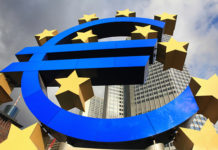Markets
August US CPI inflation data didn’t alter flagged Fed plans to keep policy rates stable at next week’s FOMC meeting. They nevertheless suggest a hawkish bias for November/December meetings as headline inflation rose at the fastest pace since June of last year (0.6% M/M). Rising energy (commodity) prices risk complicating the global disinflationary process in coming months. Core CPI rose by 0.3% M/M with the Y/Y-number down to 4.3% from 4.7%. Higher transportation (services) costs are something to look out for. US Treasuries sold off in a first instinctive move, but CPI numbers were too close to consensus to trigger a new downleg. Immediately, some return action followed with Treasuries in the end recording gains. The US $20bn 30-yr Bond auction was awarded at the highest yields since 2011 (4.345%) which was a full bp above the 1:00 PM bid yield. The bid cover ratio was slightly better than recent average (2.46). Daily changes on the US yield curve eventually ranged between -5.1 bps (2-yr) and -0.8 bps (30-yr). The US dollar whipsawed around the time of the CPI release, but eventually didn’t bother the loss of interest rate support, closing at EUR/USD 1.0730. US stock markets closed mixed (Dow -0.2%; Nasdaq +0.2%).
German Bunds underperformed following some final hawkish repositioning ahead of today’s ECB gathering. A Reuters article suggested an increase of June’s 3% inflation forecast for 2024 this afternoon, bolstering the case for a rate hike even if flanked by weaker growth prospects for this year and next. A 25 bps rate hike today is our preferred scenario as well. Apart from the pivotal inflation argument, we think that from a communication perspective the ECB will prefer a dovish/neutral hike over a hawkish skip. It allows time to extend the data-dependent approach until the December policy meeting with new quarterly updates and to pause in October. From a short-term perspective, it offers the benefit of clarity, reducing market volatility. Additionally, it buys the ECB time to review the run-off of its balance sheet with some hawkish governors suggesting to speed up the process through active sales from the APP bond portfolio or to end PEPP-reinvestments sooner than currently flagged (2025 at the earliest). We believe that today’s finetuning rate hike could push (ST) EUR rates and the euro in a first reaction higher, but like US CPI data yesterday we fear that especially on FX markets this could be short-lived as it will be perceived as the ECB’s final hike. Moves on FI markets could last more with the ECB stressing the need to keep policy restrictive for a long time.
News and views
Australian employment grew by 64.9k in August, crushing a 25k estimate. It followed a downwardly revised drop in July of -1.4k. The number of unemployed dropped slightly by around 3k, keeping the unemployment rate unchanged at 3.7% and close to the record low of 3.4% seen in October last year. The participation rate meanwhile rose to a record high of 67%. The head of the Australian Bureau of Statistics Jarvis said this continues to reflect a tight labour market. The strong labour market report loses some shine when noting the bulk of the employment increase came on the account of part-time jobs (62.1k). Hours worked also fell 0.5% in August. On a yearly basis, hours worked still grow faster (3.7%) than the annual increase in employment (3%) though. The Australian dollar whipsawed after the publication. AUD/USD is currently trading just shy of the intraday highs above 0.644. Swap yields temporarily rose before the fine print of the report kicked in. Current changes vary between 2.3-4.3 bps with the belly outperforming. Today’s numbers do little to alter the expected outcome for the Reserve Bank of Australia’s October 3 meeting (or any other meeting later this year). The RBA held rates steady for a third time straight this month at 4.1% and is seen to keep them at that level at least through 2024H1.
The IMF said that global debt as a percentage of GDP fell sharply in 2022 for a second year straight, from 248% to 238% in 2021. This compares to the 258% seen in 2020 after governments worldwide rolled out massive stimulus programs to cushion the impact of Covid. The decline in 2022 (and 2021) followed strong, post-pandemic growth as well as sharper-than-expected inflation. That said, the 2022 ratio is still above the pre-pandemic level of 238% in 2019. In addition, the IMF foresees global debt resuming its rise again going forward as inflation should stabilize at a low level over the medium term while the rebound of real GDP growth is fading.














